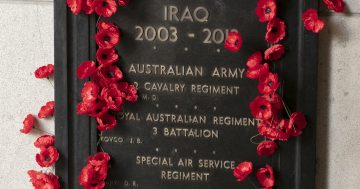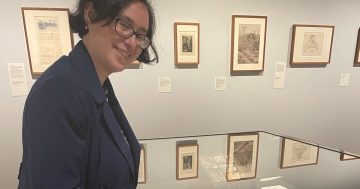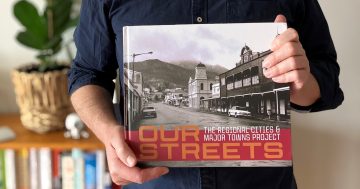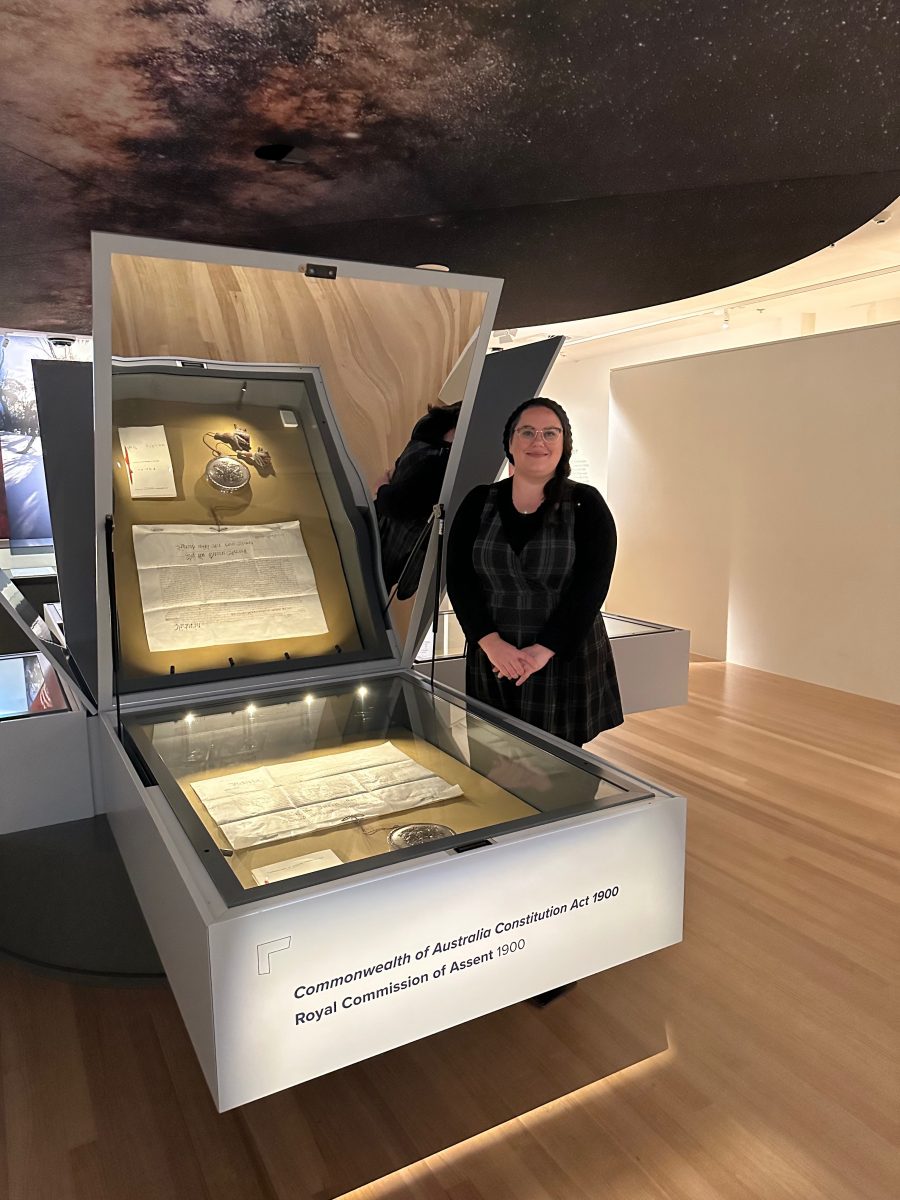
Director of Public Programs at the National Archives of Australia Jordana Schmidt next to the case which holds the Australian Constitution. Photo: National Archives of Australia.
It’s the document that tells the Australian story, our story, yet it is probably one of our most misunderstood – the Australian Constitution.
Jordana Schmidt, Director of Public Programs at the National Archives of Australia (NAA), which houses the Constitution, said people had even asked NAA staff whether changes to the document, proposed for the referendum later this year, would be “written across the top” of the existing document.
“No, we are not going to do that,” she said.
Mrs Schmidt said she believed the level of misunderstanding about our Constitution, also known as the nation’s birth certificate, was because it was more of an administrative document than its more famous relatives, like the American Constitution, which to some, was more about guaranteeing rights.
This Sunday, 9 July, marks Constitution Day, the yearly reminder of when Queen Victoria signed the Royal Commission of Assent and brought into existence the Commonwealth of Australia Constitution Act 1900.
Before 1901, Australia was not a nation but six British colonies under the law of that country. In the 1890s, representatives from the colonies met to discuss the idea of joining together to form a new nation and a written constitution was developed to set out the rules for how this new nation would work.
It took many years and even more changes, but the people of Australia finally approved the new Constitution. It was sent to the British Parliament where it was passed as the Commonwealth of Australia Constitution Act. When it came into effect on 1 January 1901, Australia became a nation.
Director-General of the NAA Simon Froude said with the current debate on constitutional reform, the 9 July anniversary was a reminder of the continuing relevance of the Australian Constitution.
“Although it is well over 100 years old, the Constitution will be front of mind for many Australians this year,” he said. “The open day provides a timely opportunity to hear from experts about the history and consequence of this important document.”
On Sunday, NAA staff will be on hand to talk about the Constitution and its importance.
“For us, public access is a core part of democracy,” Mrs Schmidt said.
“Just because this document was drafted in the 1890s, doesn’t mean it stops there.”
Since Federation, the Australian Constitution has been amended eight times. Australia may see a 9th change later this year with the upcoming referendum on the Aboriginal and Torres Strait Islander Voice.
“This document heavily influences the way we live today,” Mrs Schmidt said. “It is not just a piece of paper. It is a living document that influences so many things in our lives today.”
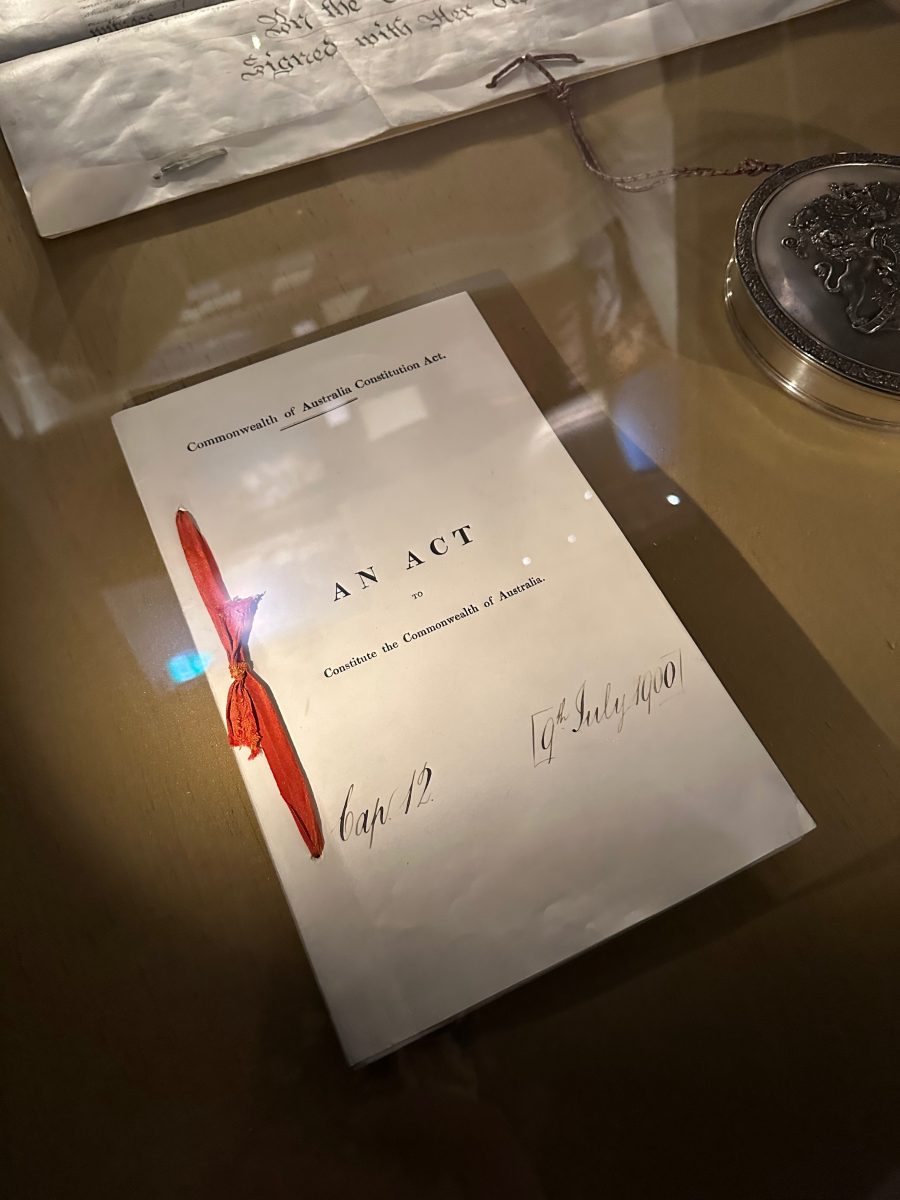
The Australian Constitution will be on display this Sunday at the National Archives to mark Constitution Day. Photo: National Archives of Australia.
On Sunday, visitors will be able to view the original Constitution. It has been on “protected display” at the NAA since 2001, constantly regulated by preservation staff as the Constitution and the Royal Commission of Assent are highly sensitive to light.
“The signature of Queen Victoria is already visibly faded, so we have to carefully monitor and limit the time it spends out in the open,” Mrs Schmidt said.
To mark Constitution Day this Sunday, visitors to the NAA can learn what the Constitution means to modern Australia. There will be special viewings of the Constitution, children’s activities, talks, tours and games, and free cupcakes for all visitors.
Constitution Open Day is on from 10:30 am to 3 pm on Sunday, 9 July, at the National Archives of Australia, Kings Avenue, Parkes, Canberra.

















